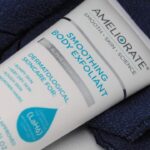After undergoing a laser hair removal procedure, you may feel a sense of relief and excitement about the results to come. However, it’s crucial to remember that the journey doesn’t end with the treatment itself. One of the most significant mistakes you can make is neglecting the recommended aftercare routine.
This routine is designed to help your skin heal properly and maximize the effectiveness of the treatment. By disregarding these guidelines, you risk not only compromising your results but also potentially causing harm to your skin. Following the aftercare instructions provided by your technician is essential for several reasons.
First, your skin may be sensitive post-treatment, and proper care can help minimize discomfort and irritation. This may include avoiding hot showers, tight clothing, or strenuous exercise for a few days. Additionally, adhering to the aftercare routine can significantly reduce the risk of complications such as hyperpigmentation or infection.
By taking these precautions seriously, you set yourself up for a smoother recovery and more satisfying results in the long run.
Key Takeaways
- Not following the recommended aftercare routine can lead to complications and slower healing after laser hair removal.
- Exposing the treated area to sunlight or tanning beds can cause hyperpigmentation and skin damage.
- Using harsh skincare products on the treated area can irritate the skin and interfere with the healing process.
- Scrubbing or exfoliating the treated area too soon can cause irritation and potentially damage the skin.
- Ignoring any signs of irritation or infection can lead to more serious complications and prolonged healing time.
Exposing the treated area to sunlight or tanning beds
One of the most critical aspects of post-laser hair removal care is protecting your skin from sun exposure. After your treatment, your skin is particularly vulnerable, and exposing it to sunlight or tanning beds can lead to adverse effects. The ultraviolet (UV) rays can cause irritation, increase the risk of pigmentation changes, and even hinder the effectiveness of the treatment itself.
Therefore, it’s vital to keep the treated area covered or apply a broad-spectrum sunscreen with a high SPF whenever you step outside. You might think that a little sun exposure won’t hurt, but even brief periods in direct sunlight can have lasting consequences on your skin’s health and appearance. Tanning beds are no safer; they can exacerbate skin sensitivity and lead to unwanted side effects.
To ensure that your skin heals properly and that you achieve optimal results from your laser hair removal, make it a priority to avoid sun exposure for at least a few weeks following your treatment. This simple step can make a world of difference in how your skin responds and how satisfied you are with your results.
Using harsh skincare products on the treated area
In the days and weeks following your laser hair removal session, it’s essential to be mindful of the skincare products you apply to the treated area. Many individuals make the mistake of using harsh or abrasive products, thinking they will help speed up recovery or enhance results. However, this approach can backfire dramatically.
Products containing alcohol, fragrances, or strong exfoliants can irritate your sensitive skin and lead to complications such as redness, swelling, or even burns. Instead of reaching for your usual skincare staples, consider opting for gentle, hydrating products that are specifically formulated for sensitive skin. Look for soothing ingredients like aloe vera, chamomile, or hyaluronic acid that can help calm inflammation and promote healing.
By being cautious about what you apply to your skin post-treatment, you not only protect your investment in laser hair removal but also foster an environment conducive to healing and rejuvenation.
Scrubbing or exfoliating the treated area too soon
| Scrubbing or Exfoliating Too Soon | Effects |
|---|---|
| Increased risk of irritation | Can cause redness and sensitivity |
| Delayed healing | May prolong the recovery process |
| Uneven results | Can lead to patchy or uneven skin tone |
Exfoliation is often touted as a key component of any skincare routine, but after laser hair removal, it’s crucial to exercise restraint. Many people mistakenly believe that scrubbing or exfoliating the treated area will help remove dead skin cells and promote faster healing. In reality, doing so too soon can lead to irritation and disrupt the healing process.
Your skin needs time to recover from the treatment, and aggressive exfoliation can exacerbate sensitivity and prolong discomfort. It’s advisable to wait at least a week or two before reintroducing exfoliation into your routine. When you do decide to exfoliate, opt for gentle methods such as chemical exfoliants with mild acids rather than physical scrubs that can be abrasive.
This approach allows you to maintain healthy skin without compromising the results of your laser hair removal treatment. Remember that patience is key; giving your skin time to heal will ultimately yield better outcomes.
Ignoring any signs of irritation or infection
After undergoing laser hair removal, it’s essential to be vigilant about monitoring your skin for any signs of irritation or infection. While some redness and swelling are normal immediately following the procedure, persistent discomfort or unusual symptoms should not be ignored. If you notice increased redness, pus, or any other concerning changes in the treated area, it’s crucial to reach out to your technician or healthcare provider promptly.
Ignoring these signs can lead to more severe complications that may require medical intervention. Early detection is key in addressing any issues before they escalate.
Shaving or waxing the treated area too soon after the procedure

One common misconception about laser hair removal is that it eliminates the need for any further hair removal methods altogether. While it significantly reduces hair growth over time, there may still be some regrowth between sessions. However, many individuals make the mistake of shaving or waxing the treated area too soon after their procedure.
This can disrupt the healing process and lead to irritation or even ingrown hairs. It’s generally recommended to wait at least a week before shaving the treated area again. If you feel that you must remove any stray hairs before this period is over, consider using a gentle trimmer instead of a razor or wax.
This approach minimizes trauma to the skin while still allowing you to maintain a polished appearance. By being patient and allowing your skin time to recover fully, you’ll set yourself up for better results in subsequent treatments.
Skipping follow-up appointments with the laser hair removal technician
Consistency is key when it comes to achieving optimal results from laser hair removal. Many individuals make the mistake of skipping follow-up appointments with their technician after their initial treatment. These sessions are crucial for monitoring progress and ensuring that you’re on track to achieve your desired outcome.
Missing appointments can lead to uneven results and may prolong the overall process. Your technician will assess how well your skin is responding to treatment during these follow-ups and make any necessary adjustments to your plan. They may recommend additional sessions based on your individual needs and hair growth patterns.
By prioritizing these appointments, you demonstrate commitment to achieving smooth skin while also benefiting from professional guidance throughout your journey.
Not staying hydrated and moisturized after the procedure
Finally, one often-overlooked aspect of post-laser hair removal care is hydration and moisturization. Your skin may feel dry or tight after treatment due to its sensitivity, making it essential to keep it well-hydrated. Drinking plenty of water helps maintain overall skin health while also promoting healing from within.
Additionally, applying a gentle moisturizer can soothe irritation and prevent dryness. Opt for products that are free from fragrances and harsh chemicals to avoid further irritating your sensitive skin. Ingredients like aloe vera or ceramides can provide much-needed relief while supporting your skin’s natural barrier function.
By prioritizing hydration and moisturization after your procedure, you not only enhance comfort but also contribute positively to the overall effectiveness of your laser hair removal treatment. In conclusion, taking care of your skin after laser hair removal is just as important as the procedure itself. By avoiding common pitfalls such as neglecting aftercare routines, exposing treated areas to sunlight, using harsh products, scrubbing too soon, ignoring signs of irritation, shaving prematurely, skipping follow-ups, and failing to stay hydrated and moisturized, you set yourself up for success in achieving smooth and beautiful skin.
Remember that patience and diligence are key components in this journey toward long-lasting results.
After undergoing laser hair removal treatment, it is important to follow proper aftercare instructions to ensure the best results. One important aspect of aftercare is knowing what not to do. In a related article on laser hair removal aftercare don’ts, readers can learn about common mistakes to avoid in order to prevent complications and achieve optimal results. To read more about this topic, visit this article on the In Laser Hair Removal website.
FAQs
What are some common aftercare don’ts for laser hair removal?
Some common aftercare don’ts for laser hair removal include avoiding sun exposure, hot showers, and using harsh skincare products on the treated area.
Why should I avoid sun exposure after laser hair removal?
Sun exposure can increase the risk of hyperpigmentation and skin damage after laser hair removal. It is important to protect the treated area from the sun by using sunscreen and covering up with clothing.
Why should I avoid hot showers after laser hair removal?
Hot showers can increase inflammation and irritation in the treated area, leading to discomfort and potential complications. It is recommended to take lukewarm showers instead to promote healing.
Why should I avoid using harsh skincare products on the treated area after laser hair removal?
Harsh skincare products, such as exfoliants and chemical peels, can irritate the skin and interfere with the healing process after laser hair removal. It is best to use gentle, non-irritating skincare products on the treated area.






